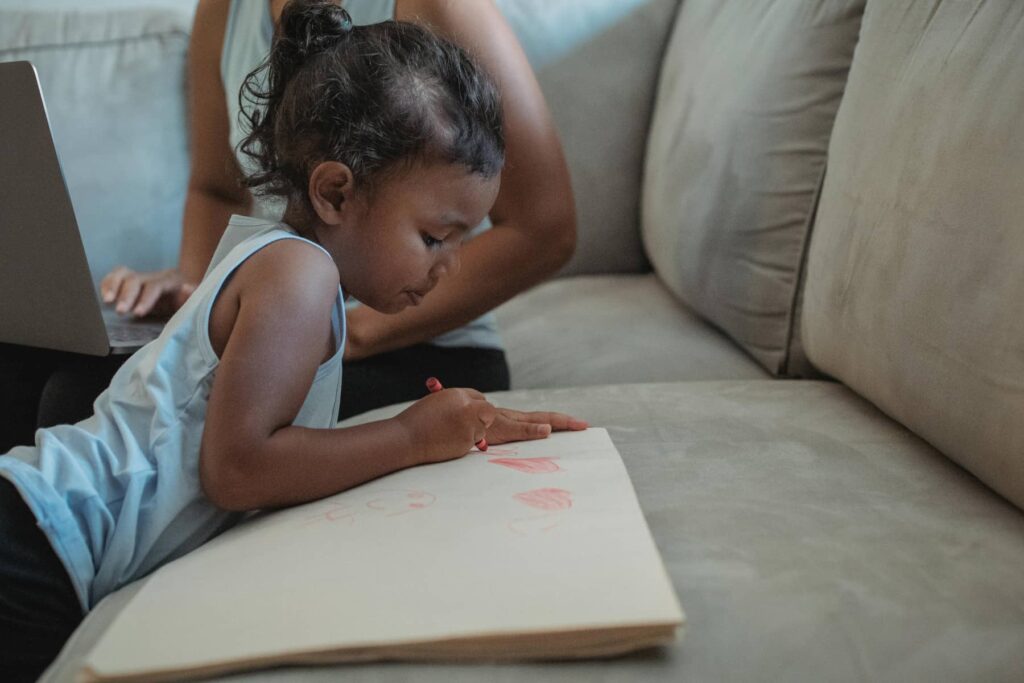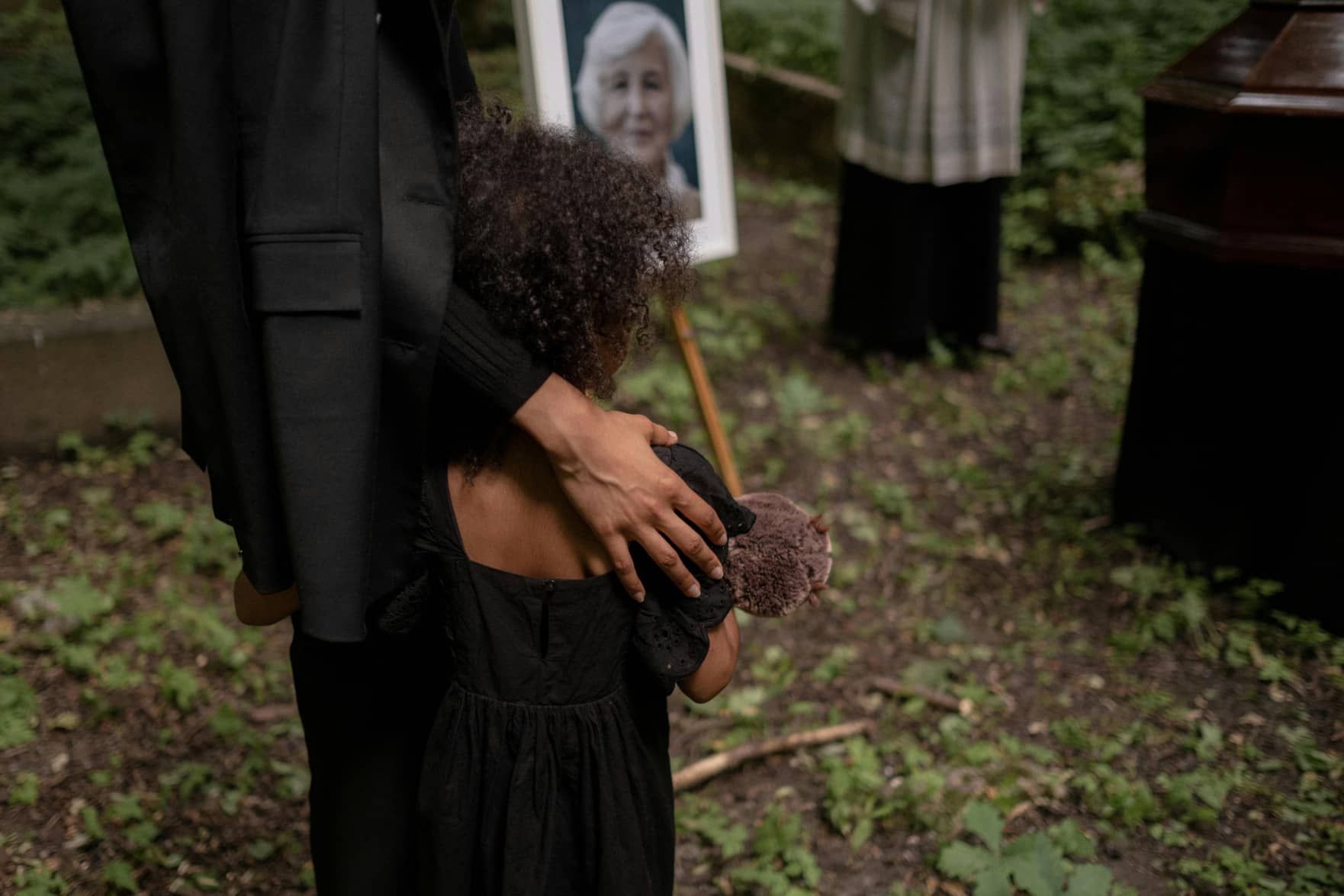Navigating conversations about death with children can be daunting. Whether it’s the loss of a loved one, a pet, or discussing the concept of death in a broader sense, how we approach these conversations can significantly impact a child’s understanding and coping process. Here’s a guide to help you communicate effectively with kids about death, highlighting key dos and don’ts, and recommending helpful resources.
Effective Communication Techniques
- Use simple, honest language
- Speak in clear, age-appropriate terms, with simple language being best. Parents tend to overthink the language they use when communicating to their kids about grief. Instead of using euphemisms, you can simply say, “Grandma died.”
- Be open and available:
- Create a safe space for children to express their feelings. Let them know it’s okay to feel sad, angry, or confused. Encourage questions and answer them honestly, at their level of understanding.
- Listen actively:
- Listen more than you speak. Pay attention to and note their concerns and feelings. It’s important to show empathy and understanding without rushing to provide answers or solutions.
- Encourage expression through play:
- Allow your children to express their grief through play, drawing, or other creative activities. Though it might not seem natural to adults, this type of expression is a very healthy way for them to process their emotions.

What to Avoid Saying
- Avoid euphemisms:
- Don’t use phrases like “passed away” or “gone to sleep” as they can be confusing. Instead, use straightforward, simple language to explain death.
- Don’t minimize their feelings:
- Avoid statements like “You’ll be fine” or “Don’t cry.” Recognize and validate their feelings, letting them know it’s okay to grieve, and that grief can present itself in many ways and at different times.
- Steer clear of clichés:
- Phrases like “He’s in a better place” or “She’s with the angels now” can be unhelpful or even upsetting. Instead, focus on simple, direct explanations.
- Don’t overwhelm with details:
- Avoid giving too much information. Keep explanations simple and appropriate to their age and understanding. For instance, young children may have a hard time processing specific medical details if a loved one passed away from illness.

Using Books and Resources to Aid the Conversation
Books can be powerful tools to help children understand and process death. Here are some recommended titles and resources:
Books for Younger Children:
- “The Fall of Freddie the Leaf” by Leo Buscaglia – A gentle story about the cycle of life and death.
- “Lifetimes: The Beautiful Way to Explain Death to Children” by Bryan Mellonie and Robert Ingpen – This book offers a straightforward explanation of life and death.
Online Resources and Support:
- The Dougy Center – Offers resources and support for grieving children and their families.
- GriefShare – Provides online support groups and materials for those dealing with loss.
Interactive Activities:
- Consider creating a memory box with your child, including photos, mementos, and drawings to help them remember and talk about their loved one.

Example: Explaining a Family Member’s Cancer Diagnosis
When a family member of mine was recently diagnosed with cancer, I needed to find a way to explain it to my young child. Here’s how I approached it:
Setting the Stage: I chose a quiet, comfortable time when my child and I could talk without interruptions. I wanted to make sure they felt safe and secure.
Using Simple Language: I began by saying, “I need to tell you something important. He is very sick. The doctors say he has cancer. Cancer is a sickness where some cells in the body grow in a way that they shouldn’t.”
Encouraging Questions: I paused to let my child ask questions. When they asked if their family member would get better, I said, “The doctors are doing everything they can to help him. Some people get better, and some don’t. We will support him and hope for the best.”
Using a Book: I then introduced a book called “What Happens When Someone I Love Has Cancer?” by Sara Olsher. We read it together, and it helped explain what cancer is and how it affects people, providing a comforting way to understand the illness.
Reassuring and Providing Support: I reassured my child that it’s normal to have many different feelings and that they could talk to me anytime. I emphasized that the family member loves them very much and that we would find ways to support and remember him, no matter what happens.
Sharing My Grief: To show that it was okay to be sad, I shared my own feelings. I said, “I feel very sad and worried too. It’s okay to feel this way, and we can talk about our feelings together.”
Seeking Professional Support
Talking to kids about death is challenging, and you don’t have to navigate this journey alone. If you need additional support or guidance on how to discuss these sensitive topics with your children, consider reaching out to a psychotherapist. For personalized support, feel free to book a session at jenniferrocha.ca. I can help you develop strategies tailored to your family’s needs, ensuring that you provide the best support for your child during these difficult times.

Final Thoughts
Talking to kids about death is challenging, but with honesty, patience, and the right tools, you can help them navigate their grief with understanding and support. Remember, it’s okay to seek help and lean on resources designed to assist families through such difficult times. By fostering open communication and providing a safe space for their feelings, you can guide them through their journey of grief with compassion and care.

